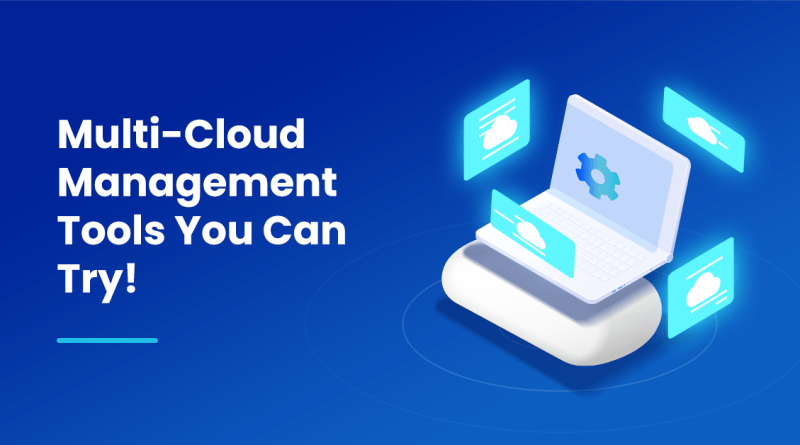Multi-Cloud Management Tools You Can Try!
Multi-cloud management tools have become increasingly popular over the past few years as organizations are moving towards a multi-cloud environment. A multi-cloud environment refers to the usage of two or more cloud services from different cloud providers. While it offers benefits such as reduced vendor lock-in, increased flexibility, and redundancy, managing multiple clouds can be challenging. This is where multi-cloud management tools come in. In this blog, we will discuss what multi-cloud management tools are and the tools that are considered by nOps.
What are Multi-Cloud Management Tools?
Multi-cloud management tools are software solutions that provide a unified interface to manage and monitor multiple cloud platforms. These tools help organizations to optimize their multi-cloud environment, improve operational efficiency, and reduce costs. With multi-cloud management tools, IT teams can manage different cloud providers, their resources, and applications from a single interface, streamlining cloud management tasks and reducing complexity.
Multi-cloud management tools offer several benefits to organizations that operate in multi-cloud environments. Here are some of the key benefits of using multi-cloud management tools:
- Centralized Management: Multi-cloud management tools provide a centralized dashboard that enables organizations to manage their infrastructure, applications, and services across multiple cloud providers from a single interface. This makes it easier for organizations to monitor and manage their multi-cloud environments and reduces the complexity of managing multiple cloud providers.
- Automation: Multi-cloud management tools enable organizations to automate their infrastructure management processes, including scaling, deployment, and configuration management. This reduces the time and effort required to manage cloud infrastructure and applications and enables organizations to focus on their core business functions.
- Cost Optimization: Multi-cloud management tools provide cloud cost optimization features that help organizations optimize their cloud spending by identifying cost-saving opportunities. This includes identifying unused resources, identifying overprovisioned resources, and identifying opportunities to switch to lower-cost cloud providers.
- Improved Security: Multi-cloud management tools provide security features that enable organizations to enforce security policies and comply with industry regulations. This includes monitoring access control, data encryption, and compliance reporting.
- Flexibility: Multi-cloud management tools enable organizations to choose the cloud providers and services that best meet their business needs. This enables organizations to optimize their workloads and improve the performance of their applications by leveraging the strengths of multiple cloud providers.
- Scalability: Multi-cloud management tools enable organizations to scale their infrastructure and applications quickly and easily. This enables organizations to respond to changes in demand quickly and ensure that their applications remain available and performant.
Multi-cloud management tools provide a range of features, including:
1. Cloud Provisioning
Multi-cloud management tools enable organizations to provision cloud resources, such as instances, storage, and databases, across multiple cloud platforms. This helps organizations to avoid vendor lock-in and take advantage of the best features and pricing offered by different cloud providers.
2. Monitoring and Reporting
Multi-cloud management tools provide a single view of the entire multi-cloud environment, enabling IT teams to monitor and report on the performance and health of their cloud infrastructure. This helps organizations to identify issues and optimize their cloud resources for better performance.
3. Cost Optimization
Multi-cloud management tools provide cost optimization features such as cost tracking, cost analysis, and cost forecasting. These features help organizations to manage and optimize their cloud spending across multiple cloud providers.
4. Security and Compliance
Multi-cloud management tools provide security and compliance features such as access control, identity management, and compliance reporting. These features help organizations to ensure that their cloud environment is secure and compliant with industry standards and regulations.
Top Multi-Cloud Management Tools
Multi-cloud environments enable organizations to leverage the strengths of multiple cloud providers to optimize their workloads and improve the performance of their applications. However, managing multiple cloud providers can be a daunting task, especially if you don’t have the right tools. Here are the top multi-cloud management tools that can help you manage your multi-cloud environment:
Cloudify
Cloudify is an open-source multi-cloud management platform that helps organizations automate their application lifecycle management processes across multiple clouds. The platform enables users to orchestrate and manage their applications across various cloud environments, including private, public, and hybrid clouds. Cloudify provides a unified dashboard that enables users to monitor the performance of their applications and automate their scaling, updating, and healing processes.
CloudBolt
CloudBolt is a hybrid cloud management platform that enables users to manage their applications and infrastructure across multiple cloud providers, including Amazon Web Services, Microsoft Azure, Google Cloud Platform, and VMware. The platform provides a single pane of glass for managing your infrastructure, applications, and services, making it easier for organizations to deploy and manage their applications across multiple cloud environments.
CloudCheckr
CloudCheckr is a cloud management platform that enables organizations to manage their infrastructure and applications across multiple cloud providers, including Amazon Web Services, Microsoft Azure, and Google Cloud Platform. The platform provides a unified dashboard that enables users to monitor the performance of their applications and optimize their cloud spending. CloudCheckr also provides cost optimization features that help organizations identify cost-saving opportunities.
In conclusion, managing a multi-cloud environment can be a complex task, but with the right tools, organizations can simplify the management of their cloud infrastructure and applications. The multi-cloud management tools we have discussed in this post provide organizations with the necessary features to automate their infrastructure management processes, monitor the performance of their applications, and optimize their cloud spending.


